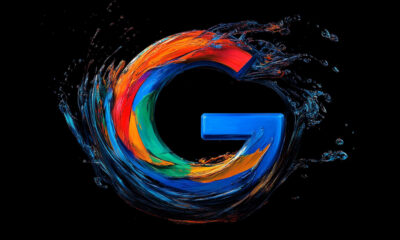MARKETING
B2B Paid Strategy: In It for the Long Run
As many of you know, B2B companies have longer customer cycles. They can range from a month to six months to a year. It is important when crafting your digital B2B strategy that you are focused on that long term return rather than the short term return, which means that you might have to adjust expectations and goal KPIs in the interim. In my experience, taking the time to lay out a year-long digital strategy for my B2B client paid off exceedingly well for the client. It was a lot of nitty-gritty work, a lot of heavy lifting, but at the end of the year, we saw the results of all of it.
I’m going to break down what we did by each platform to explain the process.
STEP 1 – Search
There are steps to each part of the B2B customer journey; within each of those steps, (I hope) your ideal customer is taking an action with you. These actions could be viewing a key page, a customer identifier action, a resource download, a video view, or even general time spent on your site/B2B specific pages. For laying out my strategy we had to start by analyzing what was working against what wasn’t working.
Location
Our team noticed there were certain areas of the country that ate up most of the budget and didn’t see a good return. Because of this, our aggregate CPA was being driven up due to the areas that we were spending the most but not receiving volume.
The action we took: restructured the account to break out campaigns by regions
Conversion Events
The B2B account was tracking multiple conversion events but we were sending every campaign to the same, high intent, form fill landing page. This was hurting our overall conversion rates.
The action we took: within our regional campaigns, we further broke out campaigns by the conversion event we wanted the user to take for each campaign and set of keywords. This goes to a PPC basic – make sure your campaigns, ad groups, & keywords are extremely tightly themed!
Landing page
Hand in hand with conversion events are the landing pages. Each landing page will have a different goal for the user that we want to achieve. We cannot have the same landing page for every ad group because not every person who is searching is ready to raise his/her hand and fill out a form to be contacted.
The action we took: segmented out landing pages to each themed ad group.
This way we could identify the audience type as well as the cost we were willing to spend on each step of the funnel.
STEP 2 – Social
Facebook can work for B2B. It likely will not be a final step in the customer journey, but it is the perfect platform for generating traffic, resource downloads, video views, etc. Essentially, we mirrored what we were doing on search on our social platforms; with the exception that we were able to get more granular and segmented with the types of audiences we were targeting.
Segmented Campaigns
Similar to search, we had multiple conversion actions to track. We didn’t want to track just one, but all of them.
The action we took: Each conversion event (or you could view it as a step in the funnel) had a separate campaign.
BONUS: This was a super easy and clean way to build remarketing audiences off of people who had taken previous actions for more actions!
Multiple Ads
Like search, having options for ads to show is important.
The action we took: Not only did we have multiple ads, but we had multiple ad types running. This gave the campaign plenty of resources to learn what performed well vs what didn’t perform well. Additionally, we had a very strict rotation schedule that we adhered to; we never let our ads get fatigued by always having the next round of ads and ad copy on deck to turn on. This prevented any swings in costs and CVR.
STEP 3 – Programmatic
Programmatic is expensive and can be a hard sell. However, the results we saw once we had launched our programmatic campaigns were significant. Our client told us that in the quarter we launched programmatic ads, the number of leads that started and ended with a digital ad increased by over 50%.
From this process, it is a drawn-out timeline that cannot generate quick turnarounds in performance or in implementation. We drew this outline at the start of the year with a set schedule for when each step would be rolled out. Setting expectations up from, as well as requesting resources at the start, solidified our client-agency relationship along with our end of year performance.










